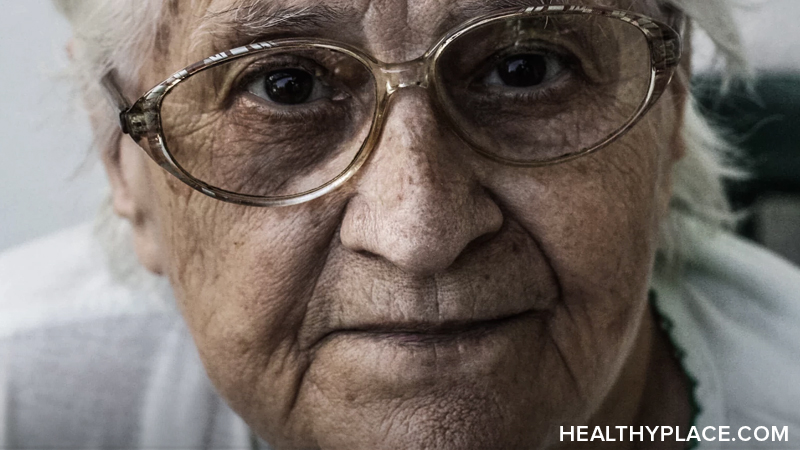
ADHD in girls and women can look very different from ADHD in boys and men. Girls and women with ADHD often have very different challenges.
Knowledge of ADHD in women at this time is extremely limited as few studies have been conducted on this population(1,2). Women have only recently begun to be diagnosed and treated for ADHD, and today, most of what we know about this population is based on the clinical experience of mental health professionals who have specialized in treating women.
Information includes:
- common symptoms and patterns of ADHD in adult women
- treatment of ADHD in adult women
- strategies for daily living
Impact of ADHD in Women
Females with ADHD are often overlooked when they are young girls(3,4), the reasons for which remain unclear, and are not diagnosed until they are adults. Frequently, a woman comes to recognize her own ADHD after one of her children has received a diagnosis. As she learns more about ADHD, she begins to see many similar patterns in herself.
Some women seek treatment for ADHD because their lives are out of control -- their finances may be in chaos; their paperwork and record-keeping are often poorly managed; they may struggle unsuccessfully to keep up with the demands of their jobs; and they may feel even less able to keep up with the daily tasks of meals, laundry, and life management(5). Other women are more successful in hiding their ADHD, struggling valiantly to keep up with increasingly difficult demands by working into the night and spending their free time trying to "get organized." But whether a woman's life is clearly in chaos or whether she is able to hide her struggles, she often describes herself as feeling overwhelmed and exhausted (6).
While research in women continues to lag behind that in adult males with ADHD, many clinicians are finding significant concerns and co-existing conditions in women with ADHD. Compulsive overeating, alcohol abuse, and chronic sleep deprivation may be present in women with AD/HD(7,8,9).
Women with ADHD often experience dysphoria (unpleasant mood), major depression and anxiety disorders, with rates of depressive and anxiety disorders similar to those in men with ADHD(10). However, women with AD/HD appear to experience more psychological distress and have lower self-image than men with AD/HD(11,12).
Compared to women without ADHD, women diagnosed with ADHD in adulthood are more likely to have depressive symptoms, are more stressed and anxious, have more external locus of control (tendency to attribute success and difficulties to external factors such as chance), have lower self-esteem, and are engaged more in coping strategies that are emotion-oriented (use self-protective measures to reduce stress) than task-oriented (take action to solve problems)(2).
Studies show that ADHD in a family member causes stress for the entire family(13). However, stress levels may be higher for women than men because they bear more responsibility for home and children. In addition, recent research suggests that husbands of women with ADHD are less tolerant of their spouse's ADHD patterns than wives of men with AD/HD(14). Chronic stress takes its toll on women with ADHD, affecting them both physically and psychologically. Women who suffer chronic stress like that associated with AD/HD are more at risk for diseases related to chronic stress such as fibromyalgia(15).
Thus, it is becoming increasingly clear that the lack of appropriate identification and treatment of ADHD in women is a significant public health concern.
Challenge Women with ADHD Face in Receiving Appropriate Treatment
ADHD is a condition that affects multiple aspects of mood, cognitive abilities, behaviors, and daily life. Effective treatment for ADHD in adult women may involve a multimodal approach that includes medication, psychotherapy, stress management, as well as AD/HD coaching and/or professional organizing.
Even those women fortunate enough to receive an accurate ADHD diagnosis often face the subsequent challenge of finding a professional who can provide appropriate treatment. There are very few clinicians experienced in treating adult ADHD, and even fewer who are familiar with the unique issues faced by women with ADHD. As a result, most clinicians use standard psychotherapeutic approaches. Although these approaches can be helpful in providing insight into emotional and interpersonal issues, they do not help a woman with ADHD learn to better manage her ADHD on a daily basis or learn strategies to lead a more productive and satisfying life.
ADHD-focused therapies are being developed to address a broad range of issues including self-esteem, interpersonal and family issues, daily health habits, daily stress level, and life management skills. Such interventions are often referred to as "neurocognitive psychotherapy," which combines cognitive behavior therapy with cognitive rehabilitation techniques(5,16). Cognitive behavior therapy focuses on the psychological issues of ADHD (for example, self-esteem, self-acceptance, self-blame) while the cognitive rehabilitation approach focuses on life management skills for improving cognitive functions (remembering, reasoning, understanding, problem-solving, evaluating, and using judgment), learning compensatory strategies, and restructuring the environment.
Medication Management in Women with ADHD
Medication issues are often more complicated for women with ADHD than for men. Any medication approach needs to take into consideration all aspects of the woman's life, including the treatment of co-existing conditions. Women with ADHD are more likely to suffer from co-existing anxiety and/or depression as well as a range of other conditions including learning disabilities(17,18,19). Since alcohol and drug use disorders are common in women with ADHD, and may be present at an early age, a careful history of substance use is important(20).
Medication may be further complicated by hormone fluctuations across the menstrual cycle and across the lifespan (e.g., puberty, perimenopause, and menopause) with an increase in ADHD symptoms whenever estrogen levels fall(21). In some cases, hormone replacement may need to be integrated into the medication regimen used to treat ADHD.
For more information on medication management in adults with ADHD, see the fact sheet on the medical treatment of ADHD in adults.
Other ADHD Treatment Approaches
Women with ADHD may benefit from one or more of the following treatment approaches:
-
Parent training. In most families, the primary parent is the mother. Mothers are expected to be the household and family manager -- roles that require focus, organization, and planning, as well as the ability to juggle multiple responsibilities. ADHD, however, typically interferes with these abilities, making the job of mother much more difficult for women with ADHD.
Furthermore, because ADHD is hereditary, a woman with ADHD is more likely than a woman without the disorder to have a child with ADHD, further increasing her parenting challenges. Women may need training in parenting and household management geared toward adults with ADHD. The evidence-based parent management programs found to be effective in children with ADHD are also recommended for parents with ADHD 22,23. However, recent research on these parent training approaches has indicated that parent training may be less effective if the mother has high levels of AD/HD symptoms24. Thus, it may be necessary to incorporate adult AD/HD life management strategies into parent training programs for mothers with AD/HD.
-
Group therapy. Social problems for females with AD/HD develop early and appear to increase with age. Women with AD/HD have greater self-esteem problems than men with AD/HD, and often feel shame when comparing themselves to women without AD/HD11. Because many women with AD/HD feel shame and rejection, psychotherapy groups specifically designed for women with AD/HD may provide a therapeutic experience -- a place where they can feel understood and accepted by other women and a safe place to begin their journey toward accepting themselves more and learning to better manage their lives.
-
AD/HD coaching. AD/HD coaching, a new profession, has developed in response to the need among some adults with AD/HD for structure, support and focus. Coaching often takes place by telephone or e-mail. For more information on coaching, read the information and resource sheet entitled, "Coaching and AD/HD in Adults."
-
Professional organizing. As contemporary lives have become increasingly complicated, the organizer profession has grown to meet the demand. Women with AD/HD typically struggle with very high levels of disorganization in many areas of their lives. For some women, they are able to maintain organization at work, but at the expense of an organized home. For others, disorganization is widespread, which increases the challenges and difficulties of AD/HD. A professional organizer can provide hands-on assistance in sorting, discarding, filing, and storing items in a home or office, helping to set up systems that are easier to maintain. For more information on organization, see the information and resource sheet entitled, "Organizing the Home and Office."
-
Career guidance. Just as women with AD/HD may need specific guidance as a parent with AD/HD, they may also greatly benefit from career guidance, which can help them take advantage of their strengths and minimize the impact of AD/HD on workplace performance. Many professional and office jobs involve the very tasks and responsibilities that are most challenging for a person with AD/HD, including paying attention to detail, scheduling, paperwork, and maintaining an organized workspace. Sometimes a career or job change is necessary to reduce the intense daily stress often experienced in the workplace by most individuals with AD/HD. A career counselor who is familiar with AD/HD can provide very valuable guidance. For more information, consult the information and resource sheet on workplace issues.
Ways that Women with ADHD Can Help Themselves
It is helpful for a women with AD/HD to work initially with a professional to develop better life and stress management strategies. However, developing strategies that can be used at home, without the guidance of a therapist, coach or organizer, is critical to reducing the impact of AD/HD. A woman with AD/HD would benefit from the following strategies(13):
- Understand and accept your AD/HD challenges instead of judging and blaming yourself.
- Identify the sources of stress in your daily life and systematically make life changes to lower your stress level.
- Simplify your life.
- Seek structure and support from family and friends.
- Get expert parenting advice.
- Create an AD/HD-friendly family that cooperates and supports one another.
- Schedule daily time outs for yourself.
- Develop healthy self-care habits, such as getting adequate sleep and exercise and having good nutrition.
- Focus on the things you love.
Summary
Individuals with AD/HD have different needs and challenges, depending on their gender, age and environment. Unrecognized and untreated, AD/HD may have substantial mental health and education implications(1). It is important that women with AD/HD receive an accurate diagnosis that addresses both symptoms and other important issues with functioning and impairment, which will help determine appropriate treatment and strategies for the individual woman with AD/HD.
Internet Resources
The National Center for Gender Issues and AD/HD
References
1. Biederman, J., Faraone, S.V., Spencer, T., Wilens, T., Mick, E., & Lapey, K.S. (1994). Gender differences in a sample of adults with attention deficit hyperactivity disorder. Psychiatry Research, 53, 13-29.
2. Rucklidge, J.J., & Kaplan, B.J. (1997). Psychological functioning of women identified in adulthood with Attention-Deficit/Hyperactivity Disorder. Journal of Attention Disorders, 2, 167-176.
3. Biederman, J., Mick, E., Faraone, S.V., Braaten, E., Doyle, A., Spencer, T., Wilens, T.E., Frazier, E., & Johnson, M.A. (2002). Influence of gender on attention deficit hyperactivity disorder in children referred to a psychiatry clinic. American Journal of Psychiatry, 159, 36-42.
4. Gaub, M., & Carlson, C.L. (1997). Gender differences in ADHD: A meta-analysis and critical review. Journal of the American Academy of Child and Adolescent Psychiatry, 36, 1036-1045.
5. Nadeau, K. (2002). Psychotherapy for women with AD/HD. In K. Nadeau & P. Quinn (Eds.), Understanding Women with AD/HD (pp. 104-123). Silver Spring, MD: Advantage Books.
6. Solden, S. (1995). Women with attention deficit disorder: Embracing disorganization at home and in the workplace. Grass Valley, CA: Underwood Books.
7. Dodson, W.M. (2002). Sleep disorders. In P. Quinn & K. Nadeau (Eds.), Gender issues and AD/HD: Research, diagnosis, and treatment (pp. 353?364). Silver Spring, MD: Advantage Books.
8. Fleming, J., & Levy, L. (2002). Eating disorders. In P. Quinn & K. Nadeau (Eds.), Gender issues and AD/HD: Research, diagnosis, and treatment (pp. 411-426). Silver Spring, MD: Advantage Books.
9. Richardson, W. (2002). Addictions. In P. Quinn & K. Nadeau (Eds.), Gender issues and AD/HD: Research, diagnosis, and treatment (pp. 394?410). Silver Spring, MD: Advantage Books.
10. Stein, M.A., Sandoval, R., Szumowski, E., Roizen, N., Reinecke, M.A., Blondis, T.A., & Klein, Z. (1995). Psychometric characteristics of the Wender Utah Rating Scale (WURS): Reliability and factor structure for men and women. Psychopharmacology Bulletin, 31, 425-433.
11. Arcia, E., & Conners, C.K. (1998). Gender differences in ADHD?. Journal of Developmental and Behavioral Pediatrics, 19, 77-83.
12. Katz, L.J., Goldstein, G., & Geckle, M. (1998). Neuropsychological and personality differences between men and women with ADHD. Journal of Attention Disorders, 2, 239-247.
13. Nadeau, K.G. & Quinn, P.O. (Eds.). (2002). Understanding women with AD/HD. Silver Spring, MD: Advantage Books.
14. Robin, A.L., & Payson, E. (2002). The impact of AD/HD on marriage. The ADHD Report, 10(3), 9-11,14.
15. Rodin, G.C., & Lithman, J.R. (2002). Fibromyalgia in women with AD/HD. In Nadeau, K.G. & Quinn, P.O. (Eds.), Understanding Women with AD/HD. Silver Spring, MD: Advantage Books.
16. Young, J. (2002). Depression and anxiety. In Nadeau, K.G. & Quinn, P.O. (Eds.), Understanding Women with AD/HD. Silver Spring, MD: Advantage Books.
17. Biederman, J. (1998). Attention-deficit/hyperactivity disorder: a life-span perspective. Journal of Clinical Psychiatry, 59(Suppl. 7), 4-16.
18. Biederman, J., Faraone, S.V., Spencer, T., Wilens, T., Norman, D., Lapey, K.A., Mick, E., Lehman, B.K., & Doyle, A. (1993). Patterns of psychiatric comorbidity, cognition, and psychosocial functioning in adults with attention deficit hyperactivity disorder. American Journal of Psychiatry, 150, 1792-1798.
19. Biederman, J., Faraone, S.V., Mick, E., Williamson, S., Wilens, T.E., Spencer, T.J., Weber, W., Jetton, J., Kraus, I., Pert, J., & Zallen, B. (1999). Clinical correlates of ADHD in females: Findings from a large group of girls ascertained from pediatric and psychiatric referral sources. Journal of the American Academy of Child and Adolescent Psychiatry, 38, 966-975.
20. Wilens, T.E., Spencer, T.J., & Biederman, J. (1995.) Are attention-deficit hyperactivity disorder and the psychoactive substance use disorders really related?. Harvard Review of Psychiatry, 3, 160-162.
21. Quinn, P. (2002). Hormonal fluctuations and the influence of estrogen in the treatment of women with ADHD In P. Quinn & K. Nadeau (Eds.), Gender issues and AD/HD: Research, diagnosis, and treatment (pp. 183-199). Silver Spring, MD: Advantage Books.
22. Anastopoulos, A.D., & Farley, S.E. (2003). A cognitive-behavioral training program for parents of children with Attention-Deficit/Hyperactivity Disorder. In A.E. Kazdin & J. R. Weisz (Eds.), Evidence-based psychotherapies for children and adolescents (pp. 187-203). New York: Guilford Publications.
23. Robin, A.L. (1998). ADHD in adolescents: Diagnosis and treatment. New York: Guilford Press.
24. Sonuga-Barke, E.J.S., Daley, D., & Thompson, M. (2002). Does maternal AD/HD reduce the effectiveness of parent training for pre-school children's ADHD? Journal of the American Academy of Child and Adolescent Psychiatry, 41, 696-702.
This information & resource sheet was developed for the National Resource Center on AD/HD under CDC grant R04/CCR321831-01-1 by the Attention Deficit Disorder Association. It was approved by CHADD's Professional Advisory Board in February 2004. Permission is hereby granted to reproduce this document in its entirety as long as the NRC name, contact information, and logo are included.









